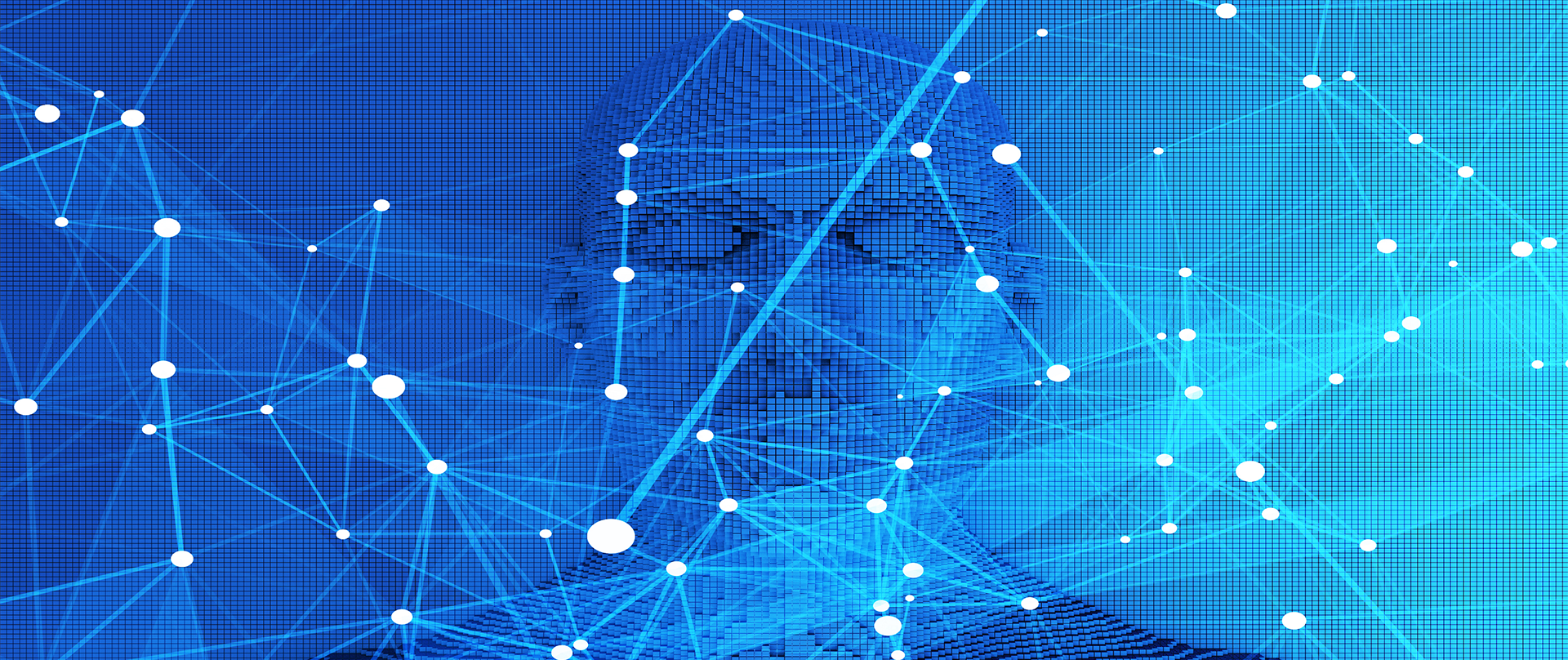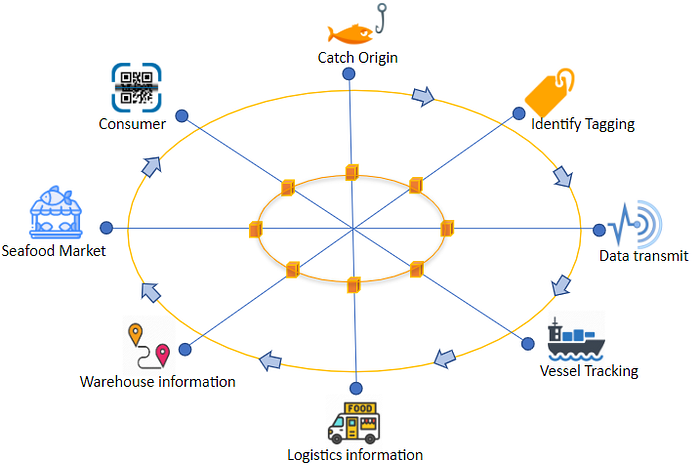NOVEMBER 26, 2020
Recent Blog
NOVEMBER 26, 2020
NOVEMBER 4, 2020
APRIL 16, 2020

In our Part 1, of the two-part series, we provided an overview of Blockchain Technology and how its practices are effective in the agriculture sector.
This article discusses how Blockchain Technology can help improve and transform the traceability, product origin (its provenance), and proof of quality (certification and claims) of the seafood products from bait (catch) to plate.
Seafood business is one of the world’s oldest and fastest-growing sectors in the global food market. 80% of byproducts are fish meal and fish oil according to the Food and Agriculture organization (FAO). Regardless of being the largest, this domain is repeatedly unregulated and unreported. Where there are people who follow fair work practices, higher are the numbers of people who prefer going with all kinds of illegal and unethical ways to perform fishing activities.
Unethical fishing is those which are conducted without the permission of the government or in violation of laws and there are no conservation measures in place which may compromise food security and food quality.
Seafood frauds are done in several ways for example: — overfishing, disposing of, lower quality, inappropriate food conditions, or providing false information (mislabeling), etc.
Illegal and unregulated fishing is a major threat to the sustainability and balance of the marine ecosystem and fish population worldwide. Seafood might get misplaced/lost during the supply chain and are inappropriately transported, stored, and handled or their authenticity cannot be verified.
The four major challenges a company has to face with regard to their seafood product supply chain approach as listed as:-
- Improper storage conditions
- Manual record-keeping
- Illegal, Unreported and Unregulated (IUU) fishing
- Mislabeling/Seafood fraud
The diagram below also explains a few other challenges faced in the traditional supply chain approach.

- In case of biased behavior of the officers in charge, there might be ending up favoring their preferred contractors.
- In a manual process, there is no common valid platform where the contract or the transactions are maintained.
- There is no proper check that could be maintained over the workers handling the process leading to fraud and mishandling of the sea products.
- The whole supply chain takes a lot of time which is the commonest problem in the offline procurement process.
- Expense management:
- Records of expense are scattered over different systems, thus making it challenging to view the common picture of the overall transactions.
- The logistics transportation and administration tasks consume both money and time which affects the efficiency and productivity of the supply chain.
“The complexity of the marine ingredient value chain triggers increasing interest surrounding raw materials that are used and a need for transparency regarding their origin,” said MarinTrust in its announcement.
A fully transparent and traceable supply chain developed by Blockchain helps to eradicate such unethical and illegal frauds in the seafood industry, making the overall process transparent and verifiable.
How is Blockchain technology applicable in the fishing industry?
Fishers — These days the seafood activities (buying and selling) are done by paperwork, maintaining records in a sheet. Using Blockchain technology helps fishers register their catch on the blockchain by tagging the fish/sea product. The fishers then transfer the catch to the suppliers both digitally and physically, as the sensor constantly transmits the entire supply chain information of the batches of fish eliminating any chance of mishandling the product till the time it reaches the consumers. Hence blockchain supply chains are efficient and reliable for those who harvest the seafood that we consume.
Consumers are more conscious of the product they consume. There is increased consumer awareness and curiosity to be acquainted with the history of the foodstuff (fish) along with its journey from the sea to the plate. Due to consumer demand and regulatory demand for better traceability of its seafood products, be it international or domestic, blockchain technology comes into the picture to provide its consumers an “end to end” information about the seafood product that’s been consumed by them.
“Building in mechanisms to deliver transparency from net to plate is central to eradicating illegal, unsustainable fishing and the human rights abuses that have plagued parts of the seafood production sector,” said Steve Trent, executive director at the Environmental JusticeFoundation (EJF).

Process Flow of Blockchain in the fishing Industry
How it works
- Fishers register their catch on the Blockchain network by entering the details required like species name, the weight of the fish, time and location, etc. caught in each batch.
- As the batch of fishes is tagged, the application records the key data, it follows the fish (through each batch) throughout its supply chain. The IoT based sensors are attached to various devices (vessels/ ships etc. ) which enables real-time monitoring of the seafood.
- The application automatically transmits data to traceable servers which then captures and stores the information on Blockchain.
- These batches of fish/seafood products move towards the logistics, processors, warehouses, and the actors involved in the supply chain get real-time information about its location and condition.
- The tag is typically removed at the time of packaging and is replaced with a unique QR code.
- When fish reaches the store its entire journey (provenance to finality) can be traced by the consumer by scanning the code mentioned on the seafood (through its batch).
The system stores every piece of information, entered at every stage, by the supply chain actors which maintains and builds the Fish Story.
Blockchain is a decentralized technology that can be meticulously designed for such a use case in the seafood industry. This application may be a payoff for lots of fishers and fish farmers who harvest the seafood we consume while we can harvest the information we want. When the seafood travels from one actor to the other in the supply chain, peer to peer contacts are formed, information is shared and trust is built amongst the parties in the value chain.
How can Blockchain Technology eradicate the imbalances in the seafood sector?
- Tracks information about sea products with similar attributes such as time, location, species name, catch date, and processing location that means it provides accurate information about the companies, facilities, supply chain actors involved with the product.
- Eliminates manual paperwork or even sending documents via email, which further cuts down labor cost and time, moreover there is less risk of human error. Smart contract alleviates mistakes and executes tasks automatically under pre-approved conditions and faster (automated) payments.
- Using Blockchain technology enables every actor involved in the supply chain process to audit the full scope of seafood product information and identify fraudulent actors (with immutable ledger records). This discourages unethical practices between the actors involved.
- Information stored in the blockchain-related to business practices, manufacturing processes, licenses, certifications, and other factors can be used for risk compliance or risk management purposes. This builds trustthroughout the supply chain process.
- Every block of information is immutable, meaning that the data cannot be manipulated, deleted, or falsified by any actor after it has been validated and placed in the blockchain. It secures every transaction proving who initiated it when it was completed and hence it is secured and free of tampering making it more reliable.
Blockchain solutions from ProdTrack, provides traceable supply chains, real-time logistics, fast secure, and trustworthy transactions. DevopsInternationals blockchain based platform ProdTrack can raise efficiency and transparency in global seafood supply chains leading to honesty, eradicating ambiguity, increasing sustainability, and improving food traceability.
With the decentralized solution of ProdTrack, all the actors involved in the supply chain are connected in a single ecosystem and have access to the same data.
If you would like to know more, please visit our website (https://devopsinternational.nl/prodtrack/) or email us @ info@devopsinternational.nl